Don't wanna be here? Send us removal request.
Text
Materials, Canvas 

“Cowboys” 2021
I was inspired by the book Of Mice and Men for this painting. I submitted this for my crit.


(On The Left) Lipstick on Unstretched Linen, 2020
(On The Right) Stitched in Pattern into Unstretched Linen, 2020
I wanted to submit this work because I still feel it is relevant to my practise and it’s something I want to expand on.
1 note
·
View note
Text
Materials, 35 MM Disposable Camera

“My Bedroom”
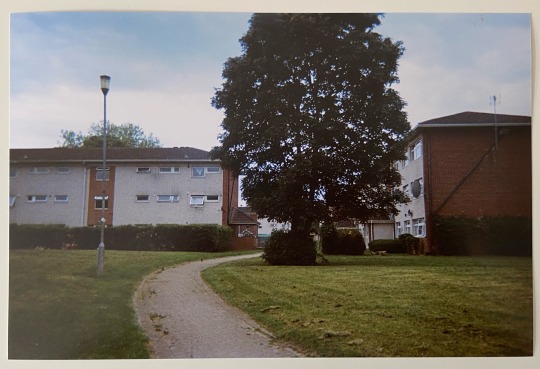
“Urban Green Space behind home”
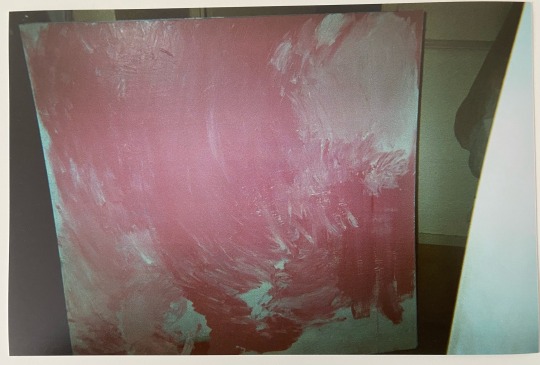
“MDF work in progress piece”

“Urban Green Space Infront of Home”

“Rubbish Area”

“Urban Green Space I Walk Past Everyday”
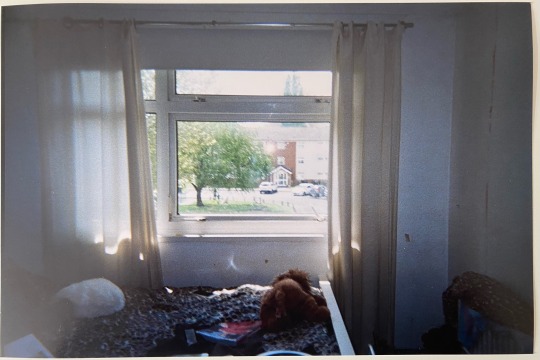
“My Bedroom Window”
0 notes
Text
Materials, 35 MM Disposable Camera
I decided to use a disposable camera to document my local area. In these images, you will see my bedroom, the outside of my home, and the local urban area. 
I decided to use a disposable camera as I felt the camera gave a certain subtle and nostalgic effect to the images.
Throughout this project, I have been trying to connect with myself through colour, theory and feminism. But I feel these pictures are so much more of a literal explanation of who am I.
I really enjoyed using the disposable camera, and I will use it for one of my possible final outcomes.
0 notes
Text
Materials, Cartridge Paper and Paper
I enjoyed experimenting with different materials to work with on paper. Also, I never paint or draw people so this was a fun experiment to compare to my other sporadic drawings and paintings. 
0 notes
Text
Materials, Paper and Cartridge Paper

“Untitled” Collection of Paintings and Drawings
Acrylic and Fine Liner Pens on A4 Paper
0 notes
Text
Materials, Paper and Cartridge Paper

“Woman Collage” 2021
Mixed Media, Makeup Blush, Magazines

“Long Legs” 2021
Acrylic and Oil Pastels on Cartridge Paper

“All I’m Doing Is Crying and Worrying” 2021
Acrylic and Oil Pastels on Cartridge Paper

“Untitled” 2021
Acrylic on Cartridge Paper

“Untitled” (A Man At Extinction Rebellion Protest)
Acrylic on Cartridge Paper
0 notes
Text
Materials, MDF
I am working with MDF through this project, as I am familiar with working with MDF. I prefer working on MDF to other materials because it is more cost effective for the size and acrylic paint / other mediums show up well on the surface.

Untitled Work, 2020
Acrylic on MDF

Current Work In Progress For Exhibition, 2021
Acrylic on MDF
0 notes
Text
Sex And The Citadel: Intimate Life In An Arab Changing World by Shereen El Feki
Sex and The Citadel is a book influenced by the sex lives and identity of people in the Middle East and Asia. El Feki has spent the last 5 years traveling throughout the Arab region, with a particular focus on Egypt, looking into sex and sexuality in that world. Marriage, pre-marital sex, gay relationships, even basic education all come under in the microscope in her book Sex and the Citadel.
In the book, El Feki perfectly communicates the private information from people about their sex lives in a very respectable and consenting way. I also think it was very appropriate for her to write this book as she is of Middle Eastern descent. I think it is interesting how El Feki has decided to use her interviews and conversations with the people involved and chose to publish this as a book rather than a column section for a newspaper or magazine or a docu-series.
I really enjoyed how brutally honest this book was, and to hear how much censorship has such a big role to play in a non western world. Also, within my own practise I have looked at colour theory and identity and I believe this book is not only inspiration for my artistic practise now but also my writing practise.
After submitting my MCP, I finally realised I wanted to pursue a career in Journalism. This book has furthered my interest for my hopeful future career.

0 notes
Text
‘Grounding’2020 by Rafael Perez Evans - Carrot Dumping At Goldsmiths, London
In October 2020, London based artist Rafael Perez Evans produced a performance based installation at Goldsmiths, University of London. The installation has recieved a mass amount of global media attention and has been the subject of much criticism.

‘Grounding’ 2020
29 Tonnes of Vegetables
Rafael Perez Evans
The produce in the piece were mainly unwanted carrots from supermarkets that were not worthy of being sold. It is also said, that full 29 tonnes of vegetables was to be collected after the exhibition and sent to feed animals.
Evans’s conceptual artworks are usually associated with questions around sculpture, rurality, the urban and conditions of the South. He reconfigures readymades, live materials and gestures into installations that attempt to address concern in his diverse production: rural shame, its anger and hope. Oscillating between forms and borrowed gestures which are often bare, futile, humorous and crude he explores paradoxes in historical, social and political themes that disorientate a compass of western progress.


‘Unpacking’ At Leeds Art Gallery, 2019-2020
Mirrors, Yams, Cellophane Plastic and Metal Trolley
Rafael Perez Evans
I am familiar with Evans work especially ‘Unpacking’. I found this piece to be particularly interesting as to how he manipulated the 4 yams to an infinite number of them. Using the mirrors against each other to create this technique, is incredibly smart but also incredibly ethical as the costs to create this would be fairly low.
I wanted to write about Evan’s work because it ties into my own personal morals as well as my practise as an art and my future career as a journalist. Whilst I understand that visually the image itself is likeable and really bold. But, Goldsmiths University is in the London borough of Lewisham, and in this borough it is estimated that 40% of people are in poverty. This feels like it is a massive kick in the teeth to the residents of this borough having to walk past an enormous amount food that could be used but is being wasted. It is not confirmed by the artist if the vegetables were going to be fed to animals after the performance was over.
I feel like this was important to document in my research journal as documenting events will be important to my future career. But also, that I am showing a clear depiction of privilege through art which hits very close to home not just for me but other artists in London.
0 notes
Text
‘Bondage of Passions’ Mercedes Azpilicueta, Gasworks London
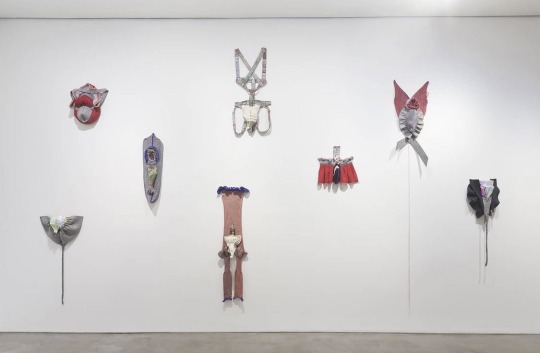
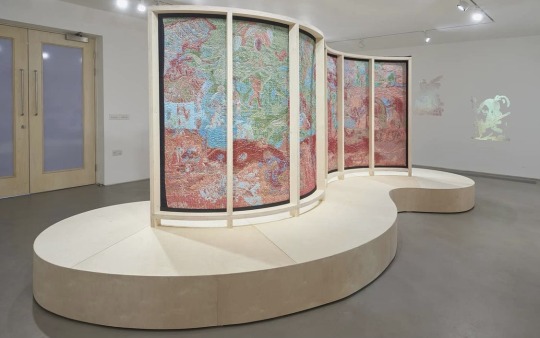

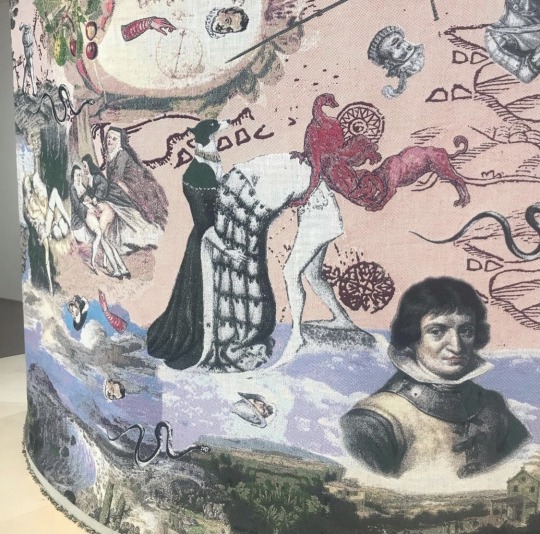
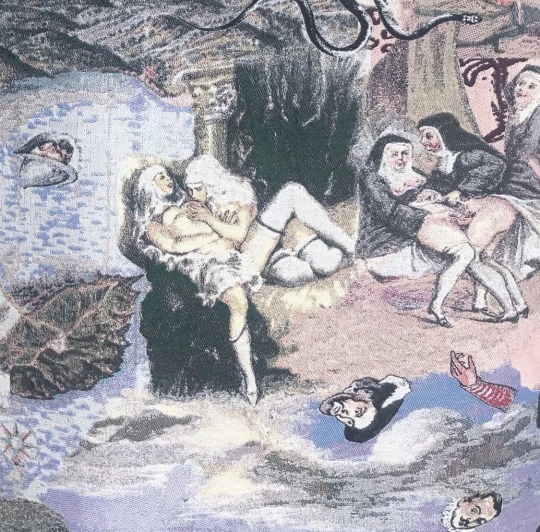
0 notes
Text
Karla Black, Artist Research
Karla Black is a Scottish sculptor who creates expressionistic abstract installations that explore materials and femininity and how we communicate with the world around us. Black has had solo exhibitions in the United States, Germany and Ireland.
In a 2016 interview with Black, she says: “I work purely out of desire, I work from the subconscious. I don’t differentiate between materials, I don’t see a hierarchy. Whatever is within my own material experience I use”. Black is also interested in ideas of play and early childhood learning. Everyday matter such as soap, makeup and toothpaste are explored alongside traditional art materials including plaster, pigment and paint, expanding the limits of what sculpture can be.

“At Fault”
Unknown Materials
Karla Black
2011

“Doesn’t Care What’s In The Words”
Materials: Cellophane, paint, Sellotape, sugar paper, chalk, powder paint, plaster powder, wood, polystyrene, polythene, thread, bath bombs, petroleum jelly, moisturising cream.
Karla Black
2011
Last year within my research journal, I looked over Karla’s work and found it very interesting but didn’t exactly connect with my own work at that time. I find that her process and use of material is not similar to my own work, but the influence for it is. Her vision of creating something from the unconscious, that is inspired by colour and every day matter resonates with what I do.
At my part time place of work, I work at a beauty store that sells bath bombs and other cosmetics. I am constantly surrounded by matter and what would be called ‘femininity’ and I didn’t even realise until I looked at Black’s work. I believe this is because, I have been conditioned to think that ‘painting’ is just for paint brushes and paints but it isn’t and I think Black’s work is a great reflection of that.
0 notes
Text
Nan Goldin, Artist Research
Nan Goldin is an American photographer, her work explores LGBTQIA people, sex, love, gender fluidity, violence, beauty and death. She is widely known for how she captured queer people living during the HIV crisis and the opioid epidemic in the United States.
Goldin’s main medium of her practise is mainly film and photography and from the beginning of her career she produced indie films such as Variety(1983) and I’ll Be Your Mirror(1995).
A big part of why I have engaged in Goldin’s work is because she does not identify with being homosexual and yet she still has had a huge role to play into documenting an important part of queer history whilst not entirely being apart of the community. When thinking about myself and all my interests all of them are linked to gay pop culture, gay art and gay nightlife. Looking back to my own childhood and asking myself why I have been interested in what I am interested in? I realised I have been introduced into gay culture/art from a very young age. From my mum playing her favourite music artists like Whitney Houston, George Michael and Scissor Sisters to having all gay friends throughout high school.
In my own work I am very much inspired by how Goldin has been able to convey gender fluidity and beauty in her work whilst the subjects of her work are not seen as ‘Beautiful’.

“Jimmy Paulette and Misty in a taxi, NYC”
Nan Goldin
1991

“View From My Bedroom Window, NYC”
Nan Goldin
2000
0 notes
Text
Judith Bernstein, Artist Research
Judith Bernstein is a feminist artist and activist who was born in New Jersey, 1942. Bernstein is known for her bold depiction of genitalia in her work as well as her unwavering commitment to the anti-war and feminist movements, Bernstein has earned a reputation for being one of the most provocative visual artists of her generation.

“Vietnam Salute”
Mixed Media on Canvas, 1966

“Abortion is Normal”
Acrylic on Canvas, 2019
45.7cm x 45.7cm

“All American Spread Eagle”
Acrylic and Oil on Canvas, 2016
217.2cm x 188cm
In an interview with Bernstein, she discusses her use of genitalia, graffiti style of work and her use of genitalia and other sexual language such as “69 (sexual position)″ to express her own sexist discrimination that she faced. Today, Bernstein continues to make work which is political and urgent, using sexuality and images of genitalia to explore human psychology and power structures.
I find Bernstein’s work to be interesting and extremely whimsical. When you compare rude or politically motivated graffiti on the streets of a city, you do not know who wrote it. Bernstein actively creates her work to expand and speak out across a number of social and feminist issues, as graffiti and art do. But she wants you to know she wrote it.
I am fascinated by Bernstein’s use of bright colour within channeling and broadcasting the voices of marginalised people and discussing social issues. Bernstein’s work is very important not only to my research but my professional journey into journalism, because of the untraditional way she chooses broadcast important issues.
0 notes
Text
Anna Laurini, Artist Research
Anna Laurini is a contemporary artist who is widely renowned for her graffiti style practise and that is found all over London and New York. Laurini is influenced by the cubism and abstract movements. Laurini’s process of work is incredibly expressive and automatic, painting and printing androgynous figures that are often besides an emotive piece of text.
I first engaged with Laurini’s work when I was around 15-16 years old, I always saw it around London. The work I often saw was always in urban / gentrified areas such as Brick Lane, E1 and Peckham, SE15 always on lampposts, trains or on walls.

“Wild In The Streets”
Anna Laurini
Spotted In Soho, 2019
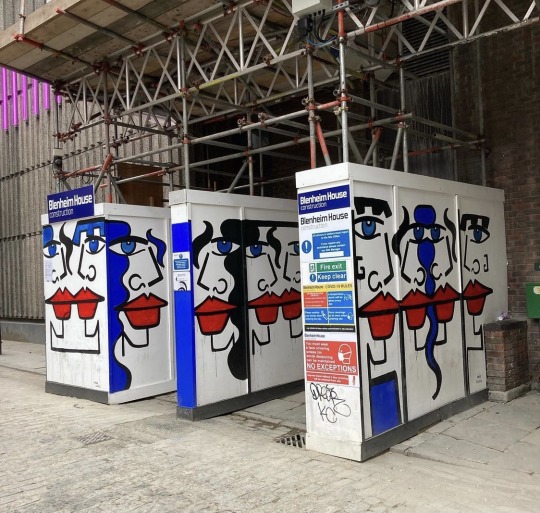
Untitled Work
Anna Laurini
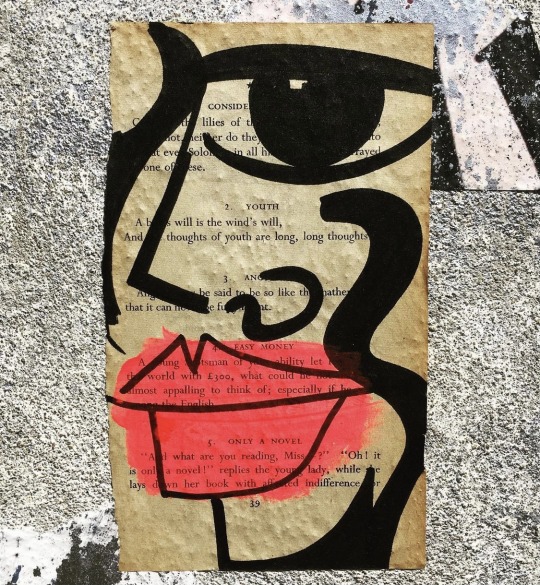
Untitled Work
Anna Laurnini
Spotted In Soho, 2019
Within Laurini’s work, there is a great sense of post modernism that is involved within each art work. All works that she produces is always involving a building that she may or may not have an attachment to, but nonetheless the buildings always have a relationship to the work.
I decided to look back at Laurini’s work because of the Ted Talk given by Ethan Pettit I watched which I have written about in my research. The work is mostly in gentrified areas of a city, and that is where the work is seen more. I wonder if Laurini is purposely doing this to attract a certain audience or to bring a certain audience to her work.
I do think that is is rather problematic, because I believe that artists like her who rely on their art being public and accessible to anyone is ideal for them, but for other people it may be a con. It forces people to see it.
Regardless, I enjoy her work as it is a representation of feminist art and gender identity that is clear to view for the viewer of the work.
0 notes
Text
Linder Sterling, Artist Research
Linder Sterling, also known as ‘Linder’ is a British artist known for her photography, radical feminism and confrontational performance art. Linder is widely renowned artist and has had solo exhibitions in China, Austria and France.
Linder is influenced from her involvement in the punk and post-punk scenes, which used style and image to rebel against the societal norms and the system. As well as her own practise, Linder produced cover art for bands such as The BuzzCocks and Magazine. In this way, Linder’s work also has parallels in the way we treat our bodies and environments as objects to serve the endless capitalist system of growth and productivity. By using recycled materials from magazines in her photomontages, Sterling shows her disconnection from reality and endless romantic ideals whilst taking an anti-consumerist stance. In a lot of her work, it communicates love

“Untitled”
Printed Paper on Boards
Linder Sterling
1976

“Against Interpretation”
Printed Paper and Other Mixed Media
Linder Sterling
2012
I am influenced by Sterling’s work as I identify her practise and method to be similar to other British female artists such as Tracey Emin. Whilst Emin’s work is extremely confessional, the use of anonymity between their work, concealing what they to conceal but revealing what they what you (the viewer) to see is very interesting. Linder’s work also greatly links to the Guerrilla Girls and much of 1980′s - 1990′s feminist art and that is a big part of my research.
0 notes
Text
Guerrilla Girls, Artist Research
Guerrilla Girls is an anonymous feminist group who are made up of artists and activists who are devoted to tackling gender inequality, racism and classism especially within the art community. The group formed in 1985 in New York, United States and are predominately known as the feminist group who protest and work with a gorilla mask to disguise their identities. According to a member of the Guerrilla Girls, their identity is covered because “Mainly, we wanted the focus to be on the issues, not on our own issues or work”.
The group generally uses culture jamming (often known and guerrilla communication) as a way of exposing the oppressors actions. Their feminist art and activism is produced through posters, billboards, books and public appearances. Guerrilla Girls have a long line of work of calling out large institutions and public figures for their gross misconduct, such as The Metropolitan Museum of Art, New York and O.J Simpson, on behalf of the O.J Simpson trial.

“Do Women Have To Be Naked To Get Into The Met. Museum?”
Guerrilla Girls
1989

“The Advantages Of Being A Woman Artist” as a part of “Guerrilla Girls Talk Back”
430 x 560 mm, Screenprint on Paper
1988
Guerrilla Girls
I have formed a real attachment to the Guerrila Girls as they formed in 1985, there were so many social issues going on at that time such as the AIDS crisis and dealing with the everyday misogyny, sexism and racism by white men. It is very empowering to know that there was a group of people out there actively dismissing that and protesting against that.
I am completely fascinated by how the Guerrilla Girls have managed to up keep their identities for over 30 years. I have a real interest in anonymity and people disguising themselves in order to communicate through art or writing and I think that can be seen through my research.
0 notes
